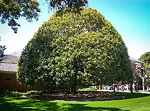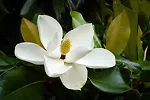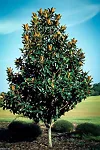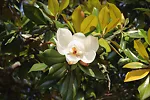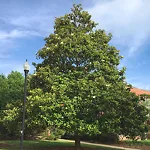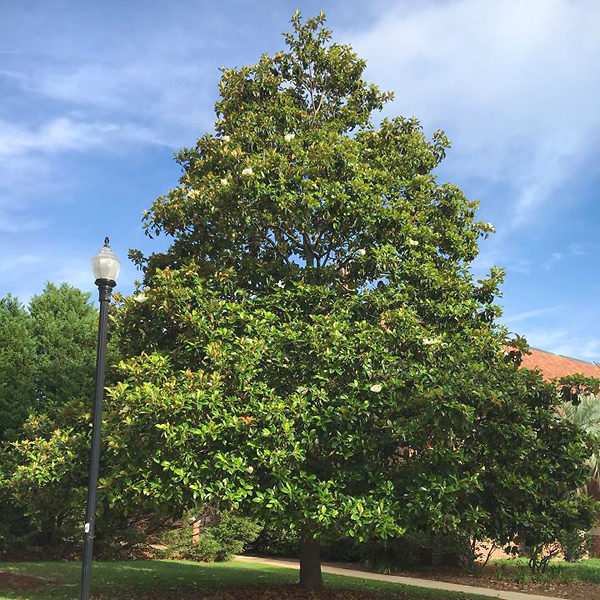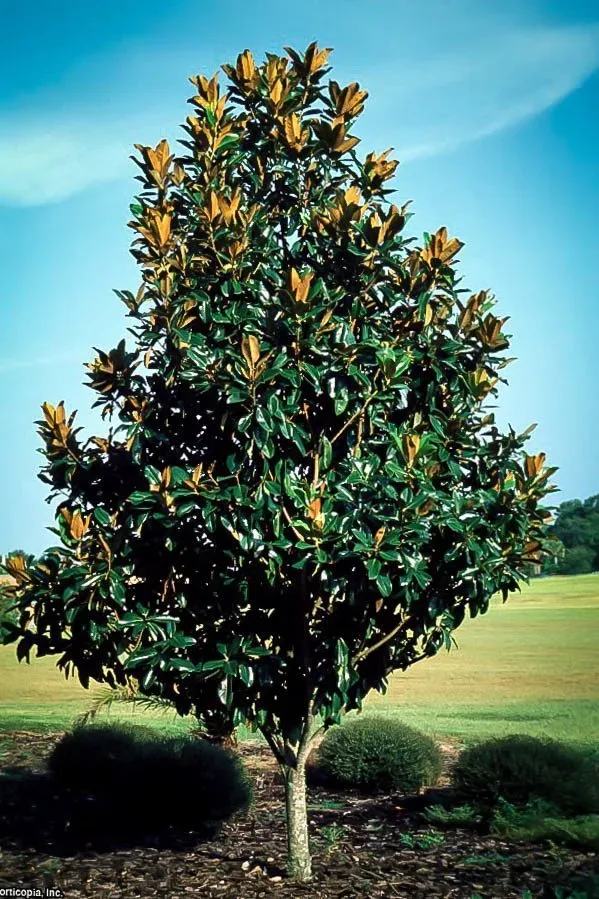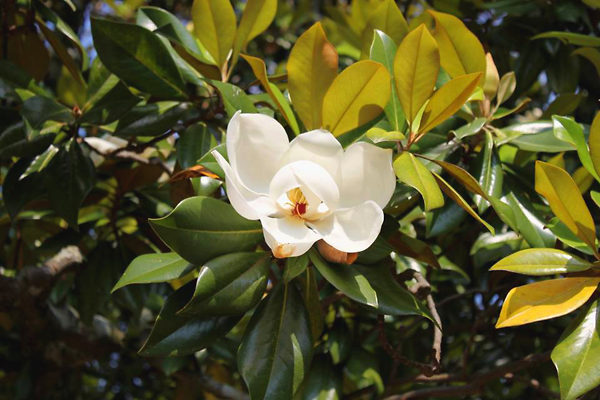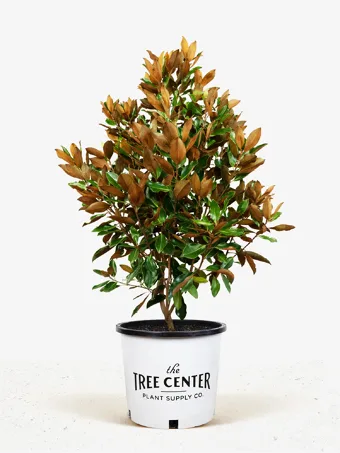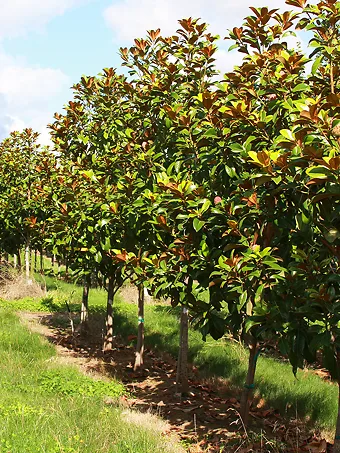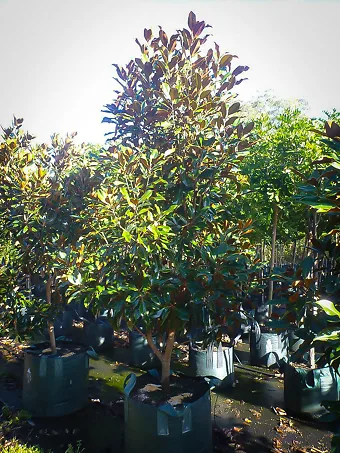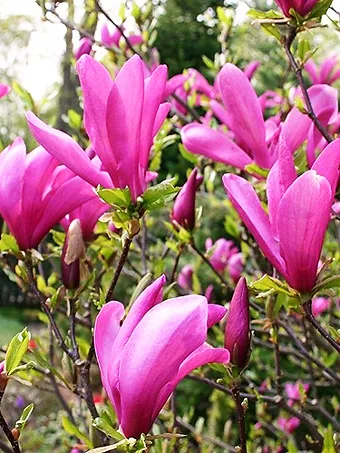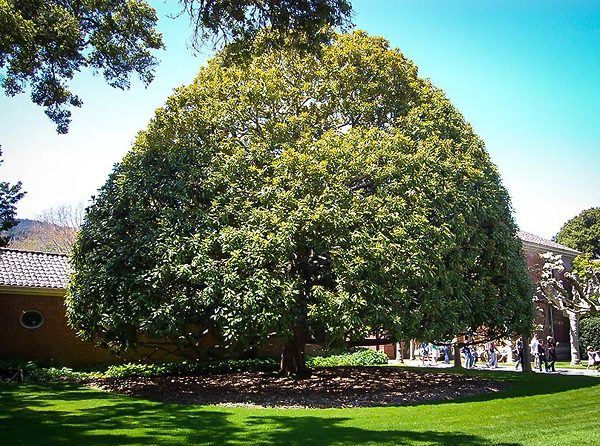
Southern Magnolia Tree
Magnolia grandifloraView more from Magnolia Trees
Southern Magnolia Tree
Magnolia grandiflora
30 day - ARRIVE AND THRIVE™ guaranteeLearn more


Special Features

Botanical Name
Magnolia grandiflora
Outdoor Growing zone
6-9
Mature Height
60-80
Mature Width
30-50
Sun needs
Full Sun, Partial Sun
Trees endow your garden with texture, dimensions and shade, and if you pick the right one you can get some spectacular floral displays too. One of the favorite flowering trees among gardeners in the United States is a native species, the spectacular Magnolia grandiflora. Better known as the Southern Magnolia, this is the official tree of one US state and its familiar blossom is the state flower of two. Easy to grow across large parts of the country, it’s an impressive tree that will form a natural centerpiece to any garden that can boast one. It can also act as a particularly nice shade tree and, being a long-lived species, will continue to delight many generations to come. If you have space for one of these on your property there are few more imposing trees you could plant, and as well as delighting you it will also be a welcome refuge for much of the local wildlife.
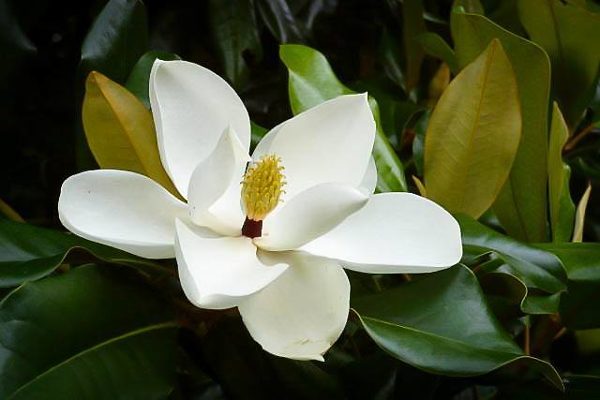
Choosing a tree for the garden is always a big decision; as well as their status as the dominant plants in your layout, trees tend to be more permanent than most of what surrounds them. A large specimen can take decades to grow to its mature size, and once established can’t be easily moved. It’s important to get it right first time, and very few gardeners who’ve settled on Magnolia grandiflora think they got it wrong. Perhaps the most beautiful of America’s native trees, the Southern Magnolia is a fantastic addition to any outdoor space.
Magnolias are found in the wild across much of the northern hemisphere, but this species is most commonly associated with the southeastern United States. It occurs naturally from southeast Virginia down to Florida, and along the northern Gulf coast through Texas and Oklahoma. Mississippi and Louisiana have adopted its blossom as the state flower – it’s represented on both of their 50 States Quarters designs – and in Mississippi the magnolia itself is the state tree. It’s also a commercially valuable species, with magnolia wood used to manufacture furniture, venetian blinds, doors, veneers and boxes. It’s also become a solid favorite among gardeners.
The Southern magnolia is a large evergreen tree that can reach a height of well over a hundred feet, although when cultivated 60 to 80 feet is the usual mature size. It usually grows a single sturdy trunk and forms a broad pyramidal crown that spreads to between 30 and 50 feet across. However in some conditions, such as on coastal dunes, it can appear as a low shrub. Its foliage consists of abundant ovate or elliptical leaves up to ten inches long, which have a waxy feel and a glossy, dark green top surface. The undersurface may be brown or white; gardeners’ folklore says trees with the brown coloration are more cold-resistant, but so far there’s no science to back this up. Leaves are shed constantly throughout the year and unless cleared will soon form a thick carpet beneath the tree. In late spring, usually from May to June, the magnolia will bloom with its characteristic white flowers. These are very large, generally eight to twelve inches in diameter and bearing six large petals. In the center they display brilliant yellow stamens, and you’ll quickly notice their characteristic fresh fragrance too. After the flowers fruiting clusters appear, and in fall these ripen into another display of color as the individual red seeds hang on threads from the branches.
The Southern magnolia isn’t a cold-weather tree, and you’ll have the best results growing it in USDA plant hardiness zones 6b to 9. That means it’s unsuitable for more northern states that experience cold winters, although in cities like St. Louis it may still survive the winter if it’s planted in a sheltered location. Before planting find a spot that offers moist, well-drained soil with a high organic content. Loam is best but it should also do well in sandy soils. The main thing is to avoid ground that’s either too dry or too wet; if your garden is damp consider the smaller but still striking Sweet Bay, Magnolia virginiana, instead. It will tolerate either full sun or part shade, but if you live in the colder part of its range some shade is a good idea; winter sun seems to cause more damage than cold winds do, and while harsh weather will usually result in leaf damage to any magnolia those in sunny spots suffer the worst.
This tree doesn’t need a lot of care once it’s planted. While it’s young it’s a good idea to water it regularly during dry spells, to ensure that the root area stays moist. Once it’s established itself and sent out deeper roots it will become more drought-resistant. Pruning isn’t usually necessary if you’ve allowed enough space for the tree to grow into but if you do want to modify its shape the best time to do this is in winter, before the flowers start to develop. Any dead branches should be cut away, and many gardeners also prune branches that are drooping towards the ground; this is a good idea if you want a shade tree. Apart from that there isn’t much involved in looking after the magnolia. It’s somewhat tolerant of urban pollution – the waxy coating on the leaves has a protective effect – but if you live in a very heavily polluted area then, again, sweet bay might be a better choice.
This beautiful magnolia is a blessing for the gardener who prefers native species but doesn’t want to compromise on looks. Large and impressive, with attractive foliage and spectacular flowers, it makes a perfect centerpiece that will naturally draw the eye; take advantage of this by creating a spectacular display of shade-loving shrubs under its canopy, or enjoy summer afternoons relaxing in the scented patch of shade it casts. Whatever you do, though, this is a tree that can give you a lifetime of pleasure.
